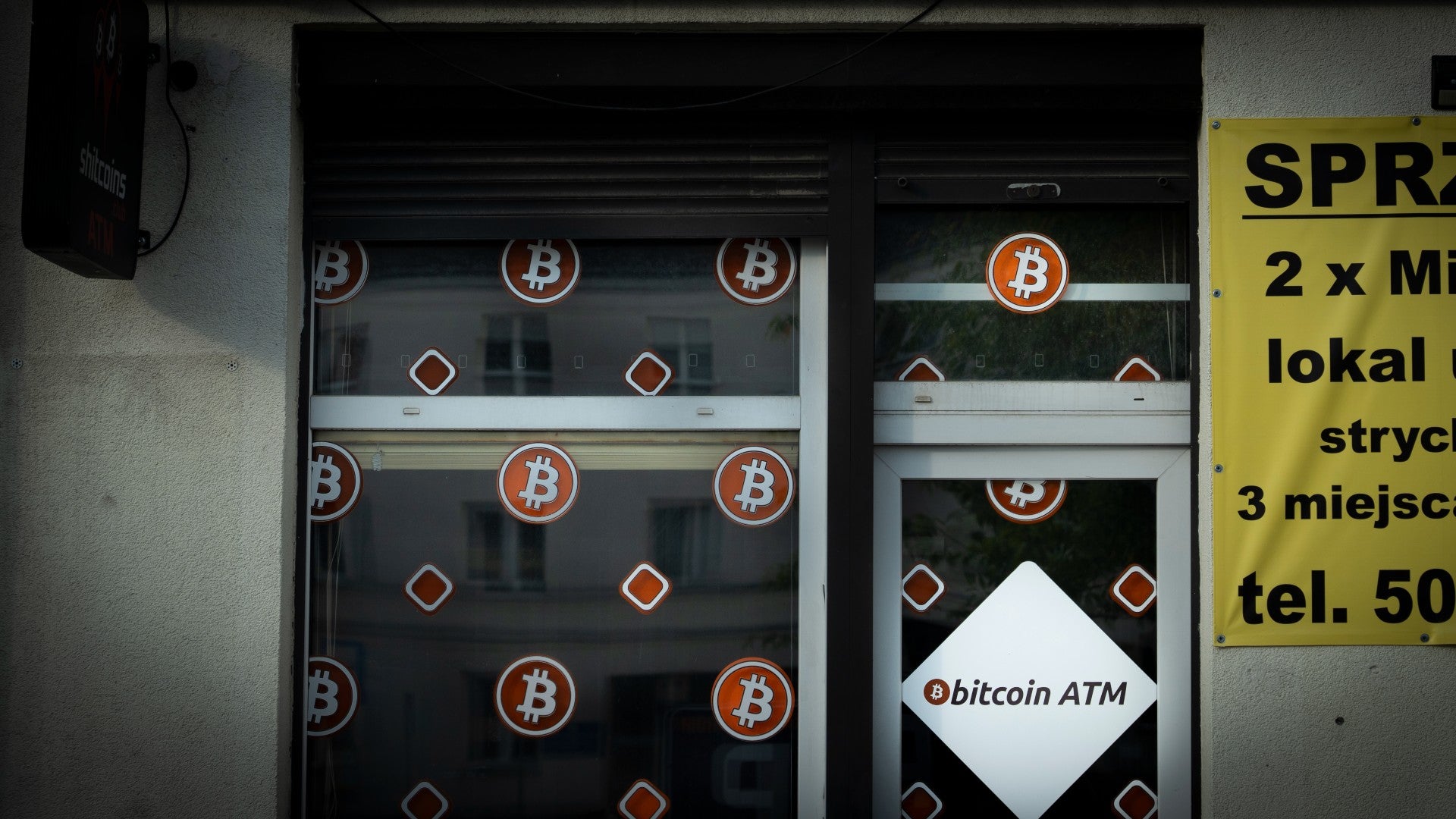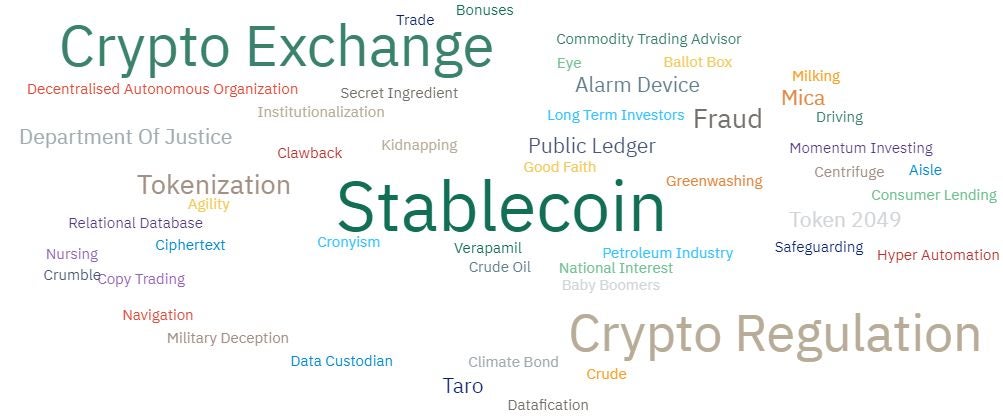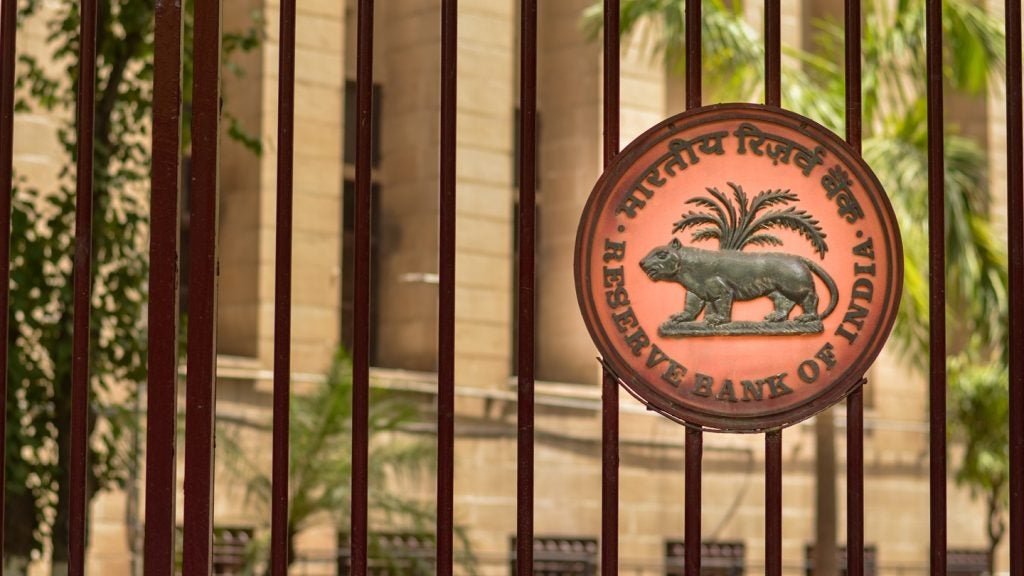
When major cryptocurrency exchange FTX collapsed last year, there was speculation that a chain reaction could bring down the whole industry.
That proved to be incorrect, but a price crash did wipe over $50bn from the market.

Access deeper industry intelligence
Experience unmatched clarity with a single platform that combines unique data, AI, and human expertise.
A year on, FTX’s erstwhile CEO Sam Bankman-Fried is in the dock (though not on the stand, yet). Facing a potential life sentence if convicted, his trial is the latest in a long line of legal troubles surrounding crypto in the last year. Most are regulatory cases rather than criminal ones, but the drive to ‘normalise’ the industry shows few signs of stopping.
Although clarity on the exact legal nature of crypto overall is still a way off, it will likely arrive sometime this decade. In the meantime, the largest coins – Ether and Bitcoin – are going strong. Bitcoin in particular has seen significant gains, currently up 70% year to date (YTD) and 36% year on year (YoY) – this time last year having been before the FTX crash. Ether is more modest, up 32% YTD and only 11% YoY, but both of these figures are far above the 5.5% base rate in the US.
Increased acceptance
The news last week that luxury car manufacturer Ferrari will accept cryptocurrencies Ether, Bitcoin and USDC shows that the use of crypto for payments is unlikely to slow any time soon. According to Reuters, Ferrari implemented the option after requests from customers including “young investors who have built their fortunes around cryptocurrencies,” and “traditional investors, who want to diversify their portfolios.”
This is not necessarily a vote of confidence in the technology from Ferrari – the company is working with payment processor BitPay to transfer the coins into traditional currencies at the point of sale to avoid market volatilities – but it is a sign that people with enough money to influence luxury brands’ business decisions still view crypto as a legitimate asset.

US Tariffs are shifting - will you react or anticipate?
Don’t let policy changes catch you off guard. Stay proactive with real-time data and expert analysis.
By GlobalDataWinter is already here
Outside of the juggernauts of Bitcoin, Ether and a few major stablecoins, the market is bleak. Funding has dried up, and major lawsuits against exchanges and coin providers have rocked confidence. This might not be a bad thing, though.
Many of the coins that failed in the wake of FTX were purely speculative and trading at vastly inflated prices. The crash burned investors in the short run, but the coins that survive the current conditions will be more stable, regulated and trusted.
Bloomberg quotes Brian Mosoff, CEO of crypto investor Ether Capital, as saying: “You can imagine there’s a pre-FTX digital-asset industry and then a post-FTX digital-asset industry. And I think that this will go down potentially in history as a marking point for when the industry became institutionalized, credible and regulated.”
Regulated, stabilised
All of this makes the news that reports of a spot Bitcoin exchange-traded fund (ETF) were false less worrying. The news caused a jump of over 10% in the currency, though this was quickly routed as BlackRock announced that its application was still under review. Nonetheless, hopes hold that approval may be forthcoming, particularly given BlackRock’s financial clout.

According to GlobalData’s analysis of select industry experts’ social media posting, the appetite for regulation is strong, with a major focus on stablecoins – coins tied to traditional currencies. As the move towards normalisation continues, more and more people are likely to view at least the major coins as safe and legitimate investments.
Our signals coverage is powered by GlobalData’s Thematic Engine, which tags millions of data items across six alternative datasets — patents, jobs, deals, company filings, social media mentions and news — to themes, sectors and companies. These signals enhance our predictive capabilities, helping us to identify the most disruptive threats across each of the sectors we cover and the companies best placed to succeed.






